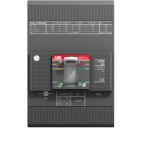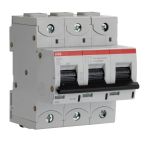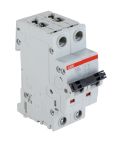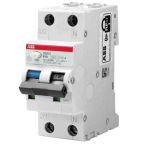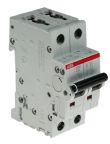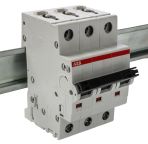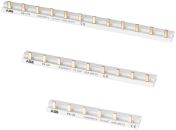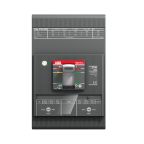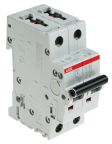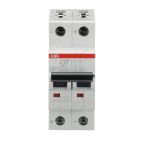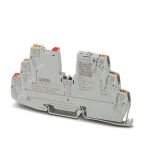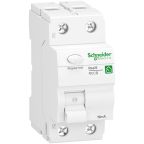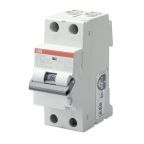Having an effective and well-designed circuit protection system in every building is vital. It not only protects machinery and equipment from costly damage or, even worse, an electrical fire, but good circuit protection also ensures people are safe too.
Here, at RS, we stock an extensive range of high-quality products within our circuit breaker range. They include various types of protection devices as well as consumer units, distribution boards and accessories. Whether you are designing and building a new system or maintaining an old one we have everything you need, providing the perfect end-to-end solution.
How Do Circuit Breakers Work?
Much like fuse holders, circuit breakers work by interrupting the flow of electricity when they detect an electrical fault, such as an overload or short circuit. Inside a circuit breaker, there’s a switch connected to either a bimetallic strip or an electromagnet. When the electrical current exceeds the starter breaker’s rated level, the strip bends or the electromagnet becomes energised, causing the switch to flip and the circuit to open. This stops the flow of electricity, protecting the circuit from damage and preventing hazards such as electrical fires. Once the issue has been resolved, the electric breaker can be reset to resume normal operation, offering a cost-effective solution compared to replacing fuses.
With various types of circuit breakers available for sale, it’s important to choose one that meets your specific needs and budget.
What Are the Different Types of Circuit Breakers?
Understanding the different types of circuit breakers is crucial for selecting the right one for your application. Below are common types of circuit breakers:
RCBO Breakers
RCBO stands for Residual Current Circuit Breaker with Over Current protection. Installed in consumer units, they protect from short circuits, overload current and residual current as they combine all the functions of an MCB and an RCCB.
RCCB Breakers
RCCB stands for Residual Current Circuit Breaker. They are designed to quickly disconnect any circuit as soon as current leaks to the earthing wire. RCCB breakers are also effective in protecting from electrocution or shock from direct contact.
MCB Breakers
MCB stands for Miniature Circuit Breaker. They are designed to protect an electric circuit from overcurrent only. They do not safeguard people from electric shock caused by earth leakage.
MCCB Breakers
MCCB stands for Moulded Case Circuit Breaker. They are another type of electrical protection device used in higher current rating applications where an MCB would not suffice. An MCCB protects against overload and short-circuit faults. With its high breaking capacity and a wider range of current ratings, MCCBs are typically found in industrial systems rather than domestic systems.
Factors to Consider When Selecting a Circuit Breaker
When choosing a circuit breaker, it's important to consider several key factors to ensure you select the most suitable option for your specific application.
- Voltage Rating: The voltage rating of a circuit breaker must match or exceed the voltage of the circuit it is protecting. Using a breaker with an insufficient voltage rating can lead to failure and potential hazards. Ensure compatibility between the breaker and your electrical system for safe and reliable operation.
- Current Rating: The current rating of a circuit breaker should be selected based on the maximum expected current in the circuit. Choosing a breaker with an inadequate current rating can result in frequent tripping, while an excessively high rating may not provide adequate protection. Match the breaker's current rating to the load requirements.
- Interrupting Capacity: The interrupting capacity of an electrical circuit breaker is the maximum fault current it can safely interrupt without damage. This rating must be higher than the maximum prospective short-circuit current in the circuit. Selecting a breaker with insufficient interrupting capacity can lead to catastrophic failure in the event of a high-current fault.
- Tripping Characteristics: Circuit breakers can have different tripping characteristics, such as thermal-magnetic, electronic, or digital. The choice depends on the specific application requirements. Thermal-magnetic breakers are suitable for general-purpose use, while electronic and digital breakers offer more precise control and advanced features for industrial applications.
- Environmental Conditions: The installation environment can impact the type of electric breaker required. Factors such as temperature, humidity, and the presence of corrosive elements should be considered. Ensure the breaker is rated for the specific environmental conditions it will be exposed to for reliable operation.
- Compliance with Standards: It's crucial to select circuit breakers that comply with relevant safety standards and regulations. This ensures the breaker has been tested and certified for safety and reliability. Adherence to standards also guarantees your installation meets local and national electrical codes.
Industrial Application of Circuit Breakers
Circuit breakers are essential in various industrial applications, ensuring the safety and reliability of electrical systems in demanding environments:
Commercial Buildings
In commercial buildings, circuit breakers are used to protect electrical installations and ensure the safety of occupants. They prevent electrical fires and equipment damage by automatically disconnecting circuits in the event of an overcurrent or fault.
Power Generation
Circuit breakers are vital in power generation facilities, where they protect generators, transformers, and distribution systems from electrical faults. They ensure the stability of the power supply and prevent damage to critical infrastructure.
Rail Systems
In rail systems, circuit breakers are used to protect electrical components in trains and signalling systems. They ensure the safety and reliability of rail operations by preventing electrical faults that could lead to system failures or accidents.
Industrial Equipment
Circuit breakers play a crucial role in protecting industrial equipment, such as motors, pumps, and control panels, from electrical faults. They help maintain the safe and efficient operation of machinery in manufacturing plants and other industrial settings.
Power Distribution
In power distribution networks, circuit breakers are used to protect transformers, switchgear, and distribution lines from electrical faults. They ensure the reliable delivery of electricity to homes, businesses and industries while minimising the risk of outages and damage to the power grid.
Frequently Asked Questions About Circuit Breakers
How do I know if the circuit breaker is bad?
Signs of a bad circuit breaker include frequent tripping, failure to reset, or visible damage such as burn marks or corrosion. If you suspect a circuit breaker is faulty, it should be tested or replaced by a qualified electrician.
Is it safe to reset a tripped breaker?
Yes, it’s generally safe to reset a tripped breaker, but only after ensuring that the cause of the trip has been identified and resolved. If the breaker continues to trip, it may indicate a more serious issue that requires professional inspection.
Where to use a circuit breaker?
Circuit breakers should be used in any electrical system that requires protection against overcurrent, short circuits, and other electrical faults. They’re commonly installed in consumer units, distribution boards, and industrial control panels.
What is the lifespan of a circuit breaker?
The lifespan of a circuit breaker can vary depending on the type, usage, and environmental conditions. However, most circuit breakers are designed to last for 30 to 40 years under normal operating conditions.
Why choose to use circuit breakers over fuses?
Circuit breakers are preferred over fuses because they can be easily reset after tripping, whereas fuses must be replaced once they blow. Circuit breakers also provide more precise protection and can be tailored to specific electrical loads.
At RS, we offer fast and reliable delivery services to ensure you receive your circuit breakers and related components exactly when you need them. For more information on our delivery options and timelines, please visit our Delivery FAQ page.
















